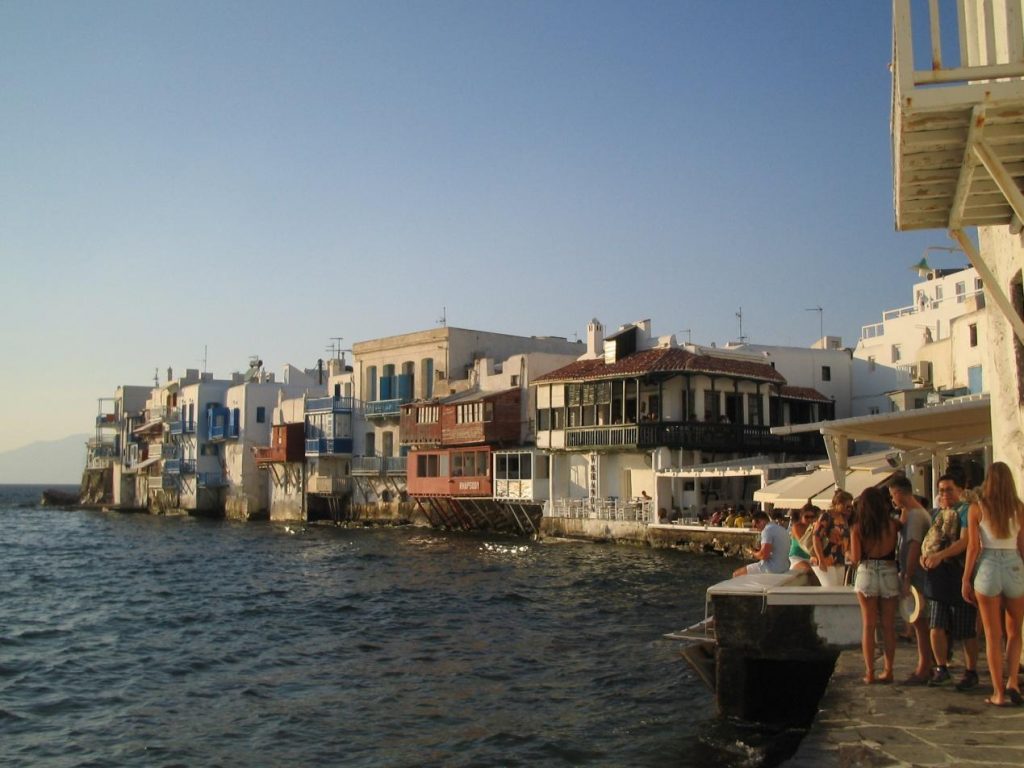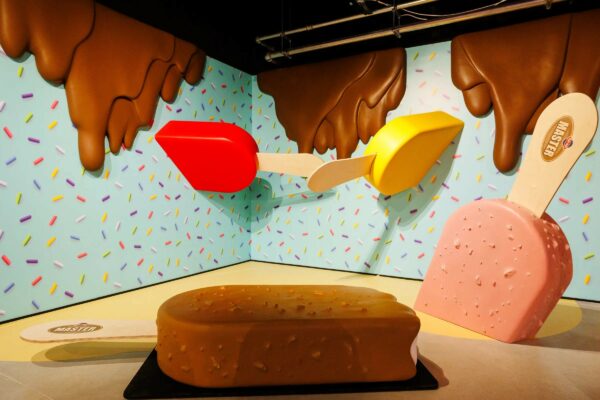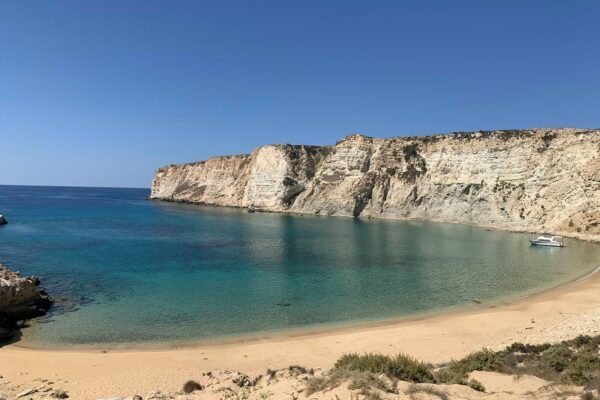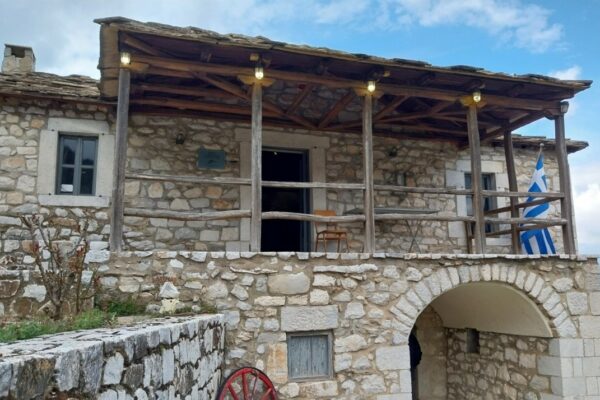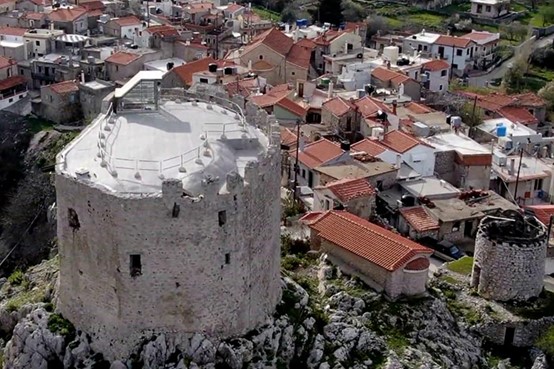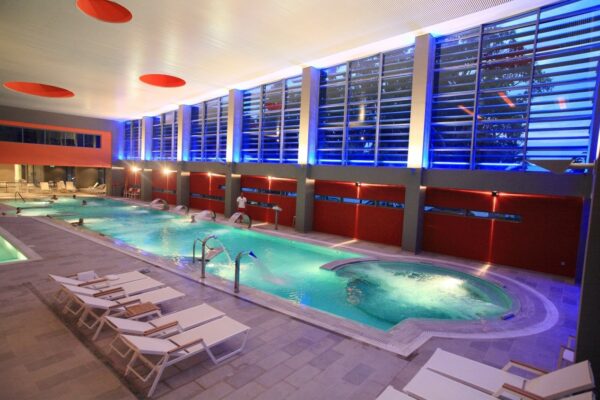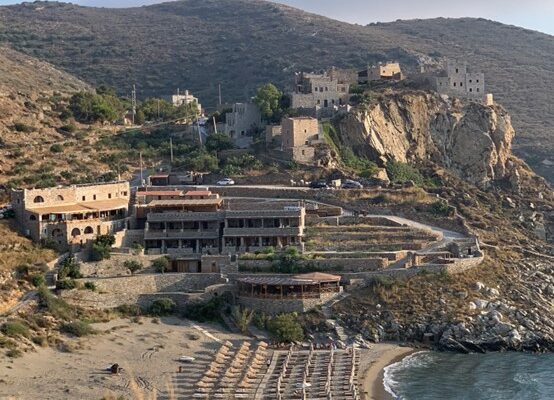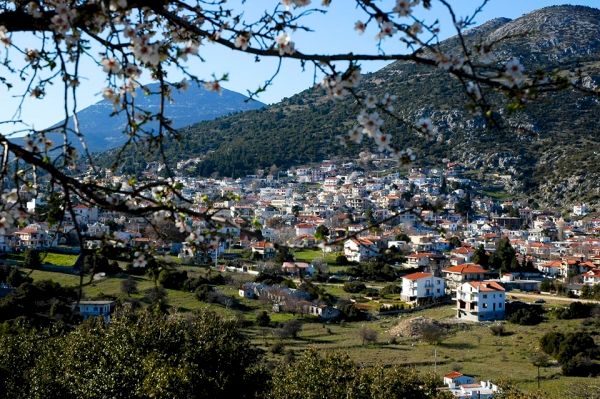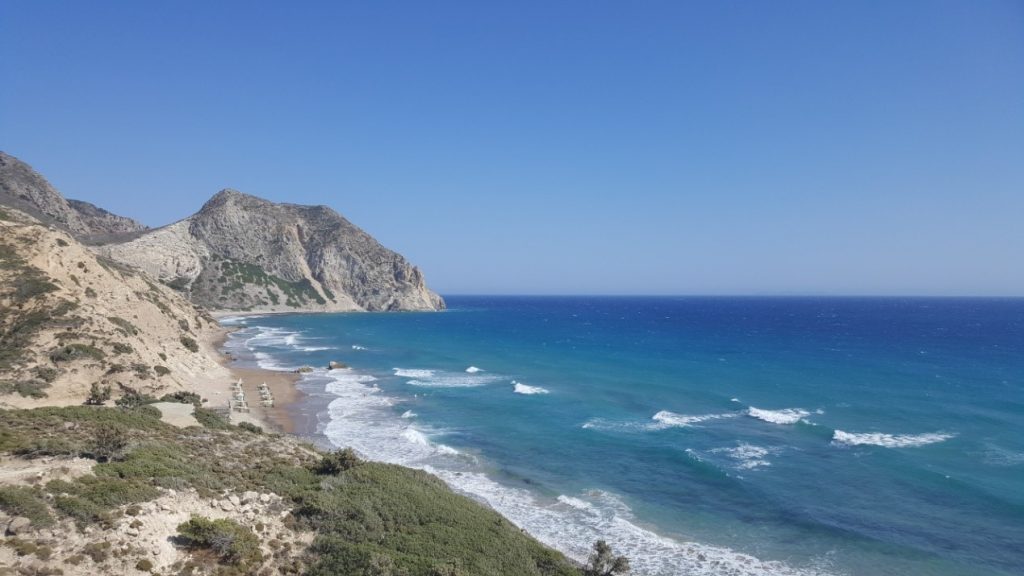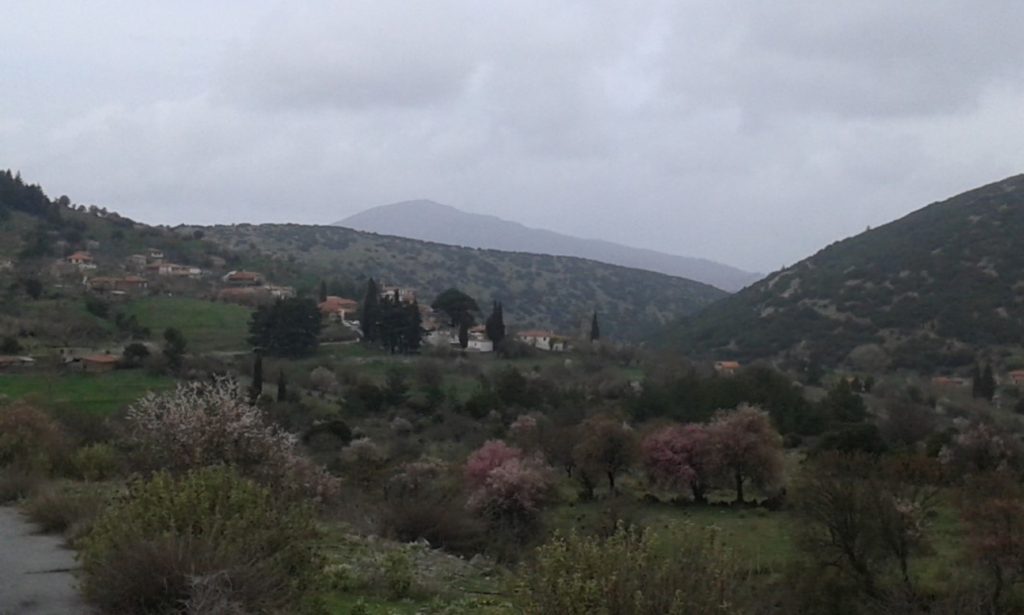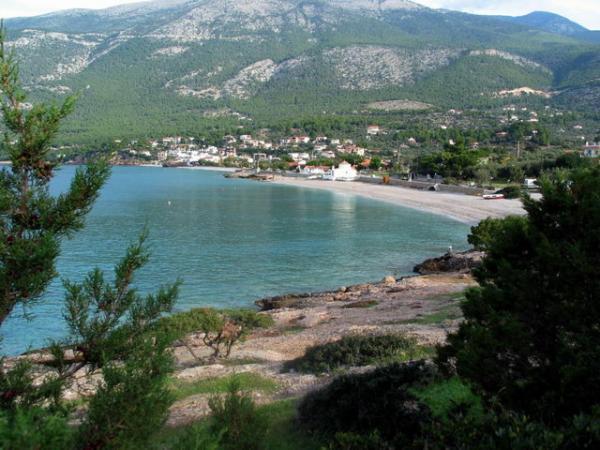Three-day cruise in the Aegean
MYKONOS, KUSADASI, Ephesus, PATMOS, HERAKLION, SANTORINI
The cruise departs from Miaoulis coast in Piraeus on 11.00. Before leaving the ship we go through screening, just like at the airport even though our destination is domestic tourism.
Simultaneously our entrance take pictures and give us a small electronic identity in which we move the ship, for food, drink, brown, orders, shopping etc. activities and the outputs - our inputs to each destination. Electronic ID cards equipped with barcode go straight to the front desk for the key to the cabin we booked. After leaving our stuff in the cabin, from loudspeakers calling us to go aboard for rehearsal with lifejackets. There after wear lifejackets, One of our employee explains their rescue rules in case of danger. This takes about half an hour as the ship has too many passengers and coordination are time consuming. Take some pictures for keepsake and continue with good mood to cruise.
Immediately after the departure, at about 12 starts at noon lunch. There are many parts of the ship where one can eat. Inside the restaurant menu is served while outdoors there are two points where breakfast can be served on your own and then take your plate and eat anywhere you want ship.
Before the ship arrived on the 1st destination is Mykonos, abroad but roofed restaurant served coffee, at about 16.00. At the beginning of the cruise ship's officers earn a lot of photos to clients which is preferable to buy, if you want, towards the end of your stay as they become special offers.
Arrival in Mykonos 18.00 until 21.30
After drank coffee and prepared for your first output is on Mykonos 18.00 The ship moors at the new harbor. Here there are buses waiting to load to get you free up the old port of Mykonos and from there you continue on foot for the city. One can walk the streets, To take pictures in Kato Mili, admire Little Venice, the Church of Panagia Paraportiani, go down to Gialos with cafes and slowly to the coach that will lead him back on board. The Lower Mills (windmills) located in the SE of the country by the sea, the area Alefcandra . Today maintained 7 from the 10 with the best preserved Mill Geronymou (private) and the Mill of Boni, which serves as a Museum.
Little Venice in Mykonos, in Alefkandra area, is a region built on the sea and because it reminds Venice named. The neighborhood was built in the 18th century. from rich merchants and architecture of houses reminiscent strong Italian city. Here you get to admire one of the most famous sunsets of the Aegean.
Panagia Paraportiani (16th -17th c.) a storey complex 5 churches where 4 of them are on the ground floor and the fifth They are raised. The name comes from the fact that it is located in the northwest gate of the medieval walls of the island, the "paraporti".
Gialos, the taxi square, there is the statue of Manto Mavrogenous, campaigner for the nation Freedom (1821) which was Mykonian, from her mother's side.
For anyone who wants to return earlier to the ship, for dinner served in 21.00 he can do it. So you have the opportunity to admire the illuminated Mykonos from the deck of the ship eating. Departure of the ship from the port of Mykonos on 21.00 exactly. Dinner, drink live music, dance and various events that take place in the large inside the vessel or relaxing bar and sleep in the cabin.
Arrival in Kusadasi next morning at 7.00 until 12.30
After breakfast descend to the coastal city of Kusadasi Turkey, direct boarding of each nationality individually coach, B.C. Hellenes, for the trip to ancient Ephesus. It is about half an hour from Kusadasi and you go summer know that the tour takes 2 some hours under the hot sun, on paved paths for this dress appropriately.
Ancient Ephesus
ARCHAEOLOGICAL SITE
Once you get the coach out of the archaeological site, it is good to get this point, a book of Ephesus from the street you will reach your (5 €) as at the end of the route you will not find. Entering pay ticket and start to guide your route. First you see the Baths of Varius, Basilica, Public Market, Conservatory (Bouleuterion), a Theater 1500 positions serve for theatrical performances and meetings of Senate, Palace of Water, Temple of Domitian, by the square, the Prytaneion (Palace of the City) the sacred flame that symbolizes the heart of Ephesus and burned continuously under the care of the priests of the goddess Artemis.
You descend the Avenue Kourites (4th c.) where you will see the Houses of Patricians (Houses of the Rich) built with Hippodamian street system.
Then you will see the Public Toilets, The House of Love (4th c.) and will end in spectacular Library of Celsus. The Tiberius Iulius Celsus was General Prefect of Asia Minor Rome. When Celsus died (114 A.D.) his son began to build a library on the monument which was buried his father. Completion of construction made the grandson of Celsus (125 A.D.) which at that time had 12.000 rolls books. The library was burned and demolished in the Gothic era (265 A.D.).
In front of the Library of Celsus, after the restoration of (1970-1978), you will see a row of Corinthian type columns and four female statues, of wisdom, Virtue, the Concept and Science, which symbolize the knowledge and intelligence of Celsus.
Inside the library there were three floors shelves that held rolls of papyrus, into cavities in the walls to protect from moisture. Right as we look at the Library stands the Gate of Mithridates (40 B.C.) leading to Buy. The market was in the Hellenistic period (3 A.D.) large shopping center with an area of City 110 sq.m. Here is a photo stop and rest from several hours of walking under the hot sun. Then follow the Way Harbor or Marble Avenue, a road covered with marble from which the carriages passed, You arrive at the Ancient Theater.
Construction began in the time of Claudius (41-54 A.D.) and ended the era of Emperor Trajan (98-117 A.D). He had a height of 18m and about 24.500 seats. Here even today the site is used for performances and artistic events, known as the Festival of Ephesus. From the Ancient Theater and after the tour takes end and head to the exit. Here there is a souvenir shop, water and toilets. The tour to the archaeological site just ended and after boarding the bus back to Kusadasi. In the middle of the path (30 minutes) It made a stop at the factory with leather garments and handbags 'designer'. The prices are expensive especially in known brands handbags which is imitation hand but first quality.
From the Ancient Theater and after the tour takes end and head to the exit. Here there is a souvenir shop, water and toilets. The tour to the archaeological site just ended and after boarding the bus back to Kusadasi. In the middle of the path (30 minutes) It made a stop at the factory with leather garments and handbags 'designer'. The prices are expensive especially in known brands handbags which is imitation hand but first quality.
KUSADASI
It is a coastal city with 90.000 residents, in the distance 63 km Ν – SE Smyrna, opposite Samos. Once you exit the boat you can admire the former caravanserai, now hotel, the Okuz Mehmet Pasa Kernansarayi next to the pier of cruise ship. You will find many hotels, sandy beaches, several European tourists, many restaurants near the sea and shops with traditional Turkish souvenirs.
The most famous pedestrian street is the pedestrianized Barbaros Hayrettin Caddesi full of shops, confectioneries, coffee etc..
There is a small shopping center on the main avenue but wants some walking to get. If you wish to shop souvenirs to first do a little market research as prices are different for the same products and well worth the bargain, if you are going to buy a lot together. Souvenir shops located on the street Ataturk Bulvari, that is parallel to the sea, They are cheaper than the market closed. The most famous pedestrian street is the pedestrianized Barbaros Hayrettin Caddesi full of shops, confectioneries, coffee etc..
For anyone who wants to shop trendy clothes and household items there is a nice shop near the office, where it becomes the input control on the cruise ship. You should note that customs control is delayed enough, there are many passengers who want to enter the same time with you on board for this proper time management is required and the ship departs on time.
Arrival in Patmos 16.00 until 20.15
Patmos island called Revelation or Jerusalem of the Aegean because the island is St. John wrote the Holy Book of Revelation, the last book of the New Testament. The ship arrives in port, the stairs and the landing is done with boats in groups. Arriving on shore if you want to see the Cave of the Apocalypse, Chora and the Monastery of St. John Castle should go at your own expense. The only solution is to take a taxi (30 Euro return) either on your own or with others, to share the cost. To this can help you and the taxi drivers themselves. Your taxi first go to the Cave of the Apocalypse, lets you complete your visit and then come get you and take you to the country to see the monastery and walk through the village streets.
CAVE OF THE APOCALYPSE
The Cave is located on the hill between Skala and Chora and is a benchmark of Christianity worldwide.
Here the Evangelist arrives exiled from Ephesus (94 or 95 A.D.) accompaniment of the student believer Prohoros and wrote the Book of Revelation after he had visions. Remains exiled to Patmos 15 years and returned to Ephesus, where he died at the age 105 years. According to Christian tradition during the St. John's stay in the Cave, torn the rock creating three smaller slots, symbolizing the Holy Trinity. Through these slots heard the voice of God dictated to John Revelation. This whole edifice called Revelation and a UNESCO World Cultural Heritage(1999) like the Monastery of St. John in the Country. The cathode in the cave and respectively the anode has a slight difficulty as it becomes a short masonry staircase, with several steps and requires some patience ca get to the point especially when crowded.
COUNTRY
The country, UNESCO World Heritage (1999) built outside the walls of the Byzantine castle has many features medieval settlement as majestic mansions, winding alleyways, streets and arcades. The capital of the island created by the craftsmen of the monastery built the first houses to stay near Castle (1132), for fear of pirates. The Allotina district in the west of the country was created by refugees who came from Constantinople after the Fall (1453).
The capital of the island created by the craftsmen of the monastery built the first houses to stay near Castle (1132), for fear of pirates. The Allotina district in the west of the country was created by refugees who came from Constantinople after the Fall (1453). The area east Cretan developed by refugees from Crete who arrived on the island (1669), after the fall of Candia and were the ruling class. The area to the north Aporthiana, It is the youngest settlement with most of country mansions which were built from the mid 18th century. by captains and rich merchants of the island.
It is worth taking a walk to the square of Saint Lesbian (Agia lesbian) and Town Hall Square to see the home of the company co-founder of Friends Emmanuel Xanthos, who was born and raised in Patmos. The 1088 the Byzantine Emperor Alexius I Comnenus granted the monk St. Christodoulos permission to found the Monastery of Saint John the Theologian, a point higher than the Cave of the Apocalypse, on an ancient altar of the goddess Artemis. The monastery was built in 1088 -1093 in the form of a medieval castle initially built in Katholicon, the tank, various buildings and the monks' cells. The wall around the monastery has polygonal shape, EUR 15m, with two rectangular towers at the entrance fused with the wall where the top is machicolations through which throwing pencil, oil or water intruders.
Subsequently (12The c.) Added chapels the Virgin Mary and St. Christodoulou, here is where the relic of, piece in silver urn. During the flourishing trade on the island (16The c.) the rich merchants donated, They built the chapels of the Holy Cross, Apostoli, St. Basil and the sacristy next to the Catholic. The last large building which bears the name of Karpathos Bishop Neophytos Grimani became the 17th century. and gave the monastery its current form.
At the entrance of the monastery you will see a small pebbled yard with well, the two-storey arched portico "Jafar" and the large four-storey building. It houses the Sacristy, Library and Museum which contains priceless manuscripts, priestly vestments, chrysobulls, pictures, heirlooms. The Cathedral is built over an older temple of the goddess Artemis and basilica. The carved gilded iconostasis is 19th c., the silver oil lamps are Venetian 17th c., image depicting St. John the Theologian (1090) It was a gift of Alexios A Komninos to Saint Christodoulos. The 1713 founded by Makarios Patmos Kalogera, graduate of the Great School of the Nation, the Patmiada School. Teaching had as object philosophy, church music, Latin, interpretation books of Greek authors and church fathers. The School taught except Makarios Kalogera many enlightened teachers. Graduates of the School include large teachers of the nation as the founder of the Society of Friends Emmanuel. Blond, the Patmian Patriarch Theophilus B Pagkostas and Patriarch Gregory V. Today it is recognized by the state as a seminary.
STAIRCASE – PORT
The most tourist settlement on the island is the port or stairs. Here can be seen the Italian Government House which now houses the Police, the little square with the church of St. John the Theologian to walk to the shopping street with coffee, restaurants and shops. Leave a walk to the harbor for the end, shortly before boarding the boats to return to the ship.
Arrival at Heraklion in Crete 7.00 until 11.30
With the arrival of the ship in Heraklion have two options. One is to go excursion to Knossos, at your expense, and the other to make a nice walk in the city, to admire the sights and end up in the Archaeological Museum. Select the second and start the walk around the castle keep on the pedestrian with the church of St. Titus, the TOWN HALL, Square with Lions, where we drink coffee or eat and finally get to the Archaeological Museum. Here there is enough time to admire the thousands of finds from the excavations at Knossos and the surrounding areas of Crete. The imposing walls are of the Venetian period and began to built the 1462. They are the most developed form of fortification art of their times and were so powerful that withstood the twenty-year siege of the Ottoman Empire. The walls have a total length 7 km, triangular shape and are among one of the best preserved fortifications in the Mediterranean.
We reach the pedestrian zone and proceed to the Eleftherios Venizelos Square or as it is better known as square or Lion Morosini Fountain. The Morosini Fountain with its Venetian fountain and 4 lions from their mouths gushing water is a reference point for the city. Built by the Venetians to solve the city's water supply problem. The Church of Saint Titus, 1th Bishop Crete, constructed in 1869 as Yeni Mosque and 1925 He became a Christian church. It quadrillion type with a dome and the 2013 It is the Cathedral. Here is the skull of Saint Titus.
The Town Hall, close to St. Titus is admirable as is the Venetian Loggia. During the Venetian here became the gatherings of the nobility where they passed their free time or discuss the various aspects of city. After numerous interventions the building took its final form in 1628 by Francesco Morosini, known by the same name Fountain. It is a two-storey building, rectangular, with Doric columns on the ground floor and Ionic columns on the first floor. Next to this building you will see the armory (Ameria). The museum is located in the city center, exhibits include samples of Cretan prehistory and history, from the Neolithic Age to Roman times. The collection of Minoan antiquities is the richest and most important in the world. The building was constructed in 1937-1940, designed by the architect Patroklos Karantinou, the position of the Catholic Monastery of Saint Francis, which was destroyed by an earthquake (1956). Two floors and outside the museum there is a cloakroom, bill of sale, Cafe, toilets and large garden with seating.
archaeological Museum
The museum is located in the city center, exhibits include samples of Cretan prehistory and history, from the Neolithic Age to Roman times. The collection of Minoan antiquities is the richest and most important in the world. The building was constructed in 1937-1940, designed by the architect Patroklos Karantinou, the position of the Catholic Monastery of Saint Francis, which was destroyed by an earthquake (1956). Two floors and outside the museum there is a cloakroom, bill of sale, Cafe, toilets and large garden with seating.
Arrival in Santorini 16.30
The ship arrives in Yialos, old harbor. Sinks will get off with and then get in your own cable car costs (6 €) or donkeys (6 €) for your rise in the village of Fira. The island's capital is Fira, the name got from the corruption of the word Thira. The name Thira comes from the mythical Thira Sparta which protokatoikise here (10th century. B.C.) and founded the eponymous town. The name Santorini was given by the Venetians (1153) ie Santa Irene, from the church situated in the plain of Thirasia or any other church, basilica located in Perissa. Caldera said marine basin formed by precipitation by the round island and has dimensions 8X5 km and a depth of about 370 m. The rest of the round island that survives is Thira, Thirasia and Aspronisi. Once you exit the cable car take the main road to the Cathedral of Fira, dedicated to the Presentation Sotiras (1963-1968).
FIRA – COUNTRY SANTORINI
From here you can admire the volcano, Palea and Nea Kameni, wherein lies the crater of active volcano, the famous sunset, homes in downhill, hotels, cafes – bars and restaurants. Subsequently, right as you look at the volcano, to go back from where you started your walk, follow him down the street or Visitation Gold Street as has come to be called by many jewelery available here. Also before you leave the island you can see the Catholic Cathedral and Megaron Gyzi Venetian. If you want to buy something other than souvenirs take fava Santorini, sweet candy (Honey with almonds) and wine, white by the variety Assyrtiko and sweet red or white Vinsato.
Subsequently, right as you look at the volcano, to go back from where you started your walk, follow him down the street or Visitation Gold Street as has come to be called by many jewelery available here. Also before you leave the island you can see the Catholic Cathedral and Megaron Gyzi Venetian. If you want to buy something other than souvenirs take fava Santorini, sweet candy (Honey with almonds) and wine, white by the variety Assyrtiko and sweet red or white Vinsato.
Tel. Cable car : 22860-22977, 22860-22978 (price 6 /direction)
Departure for Piraeus arrival next morning 6.00
The cruise took place with the cruise ship «Celestyal Cruies»

